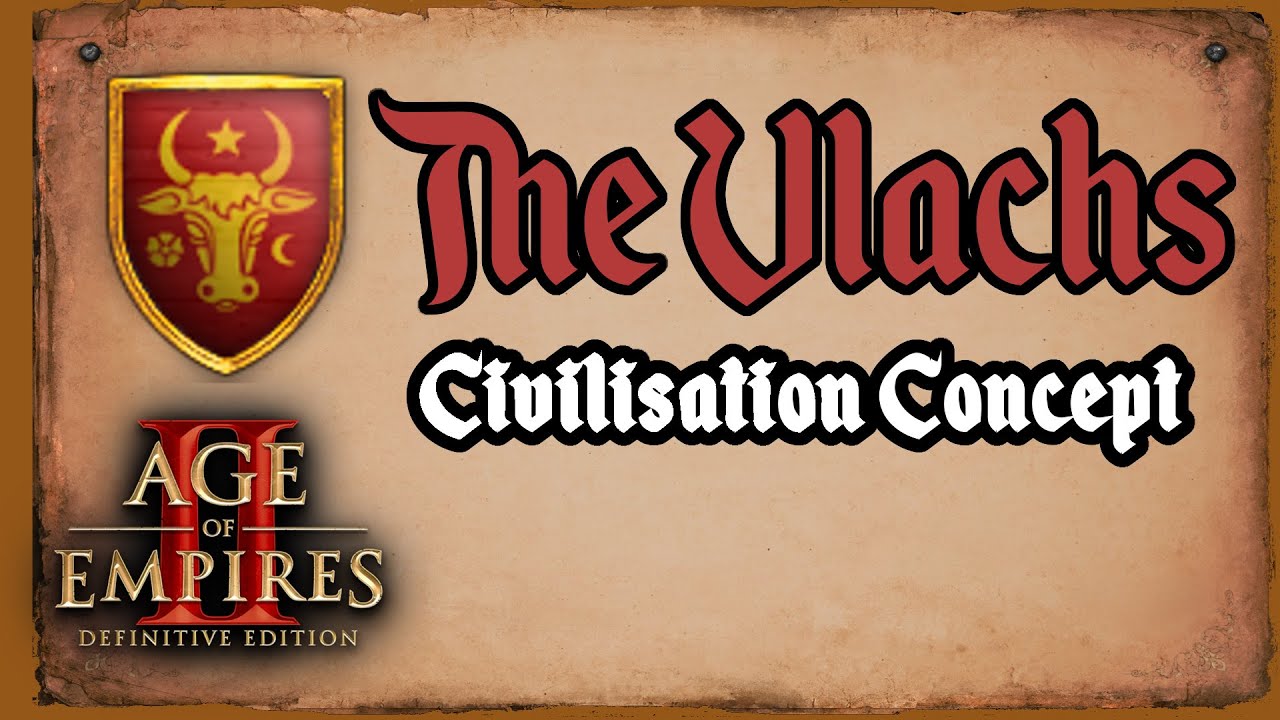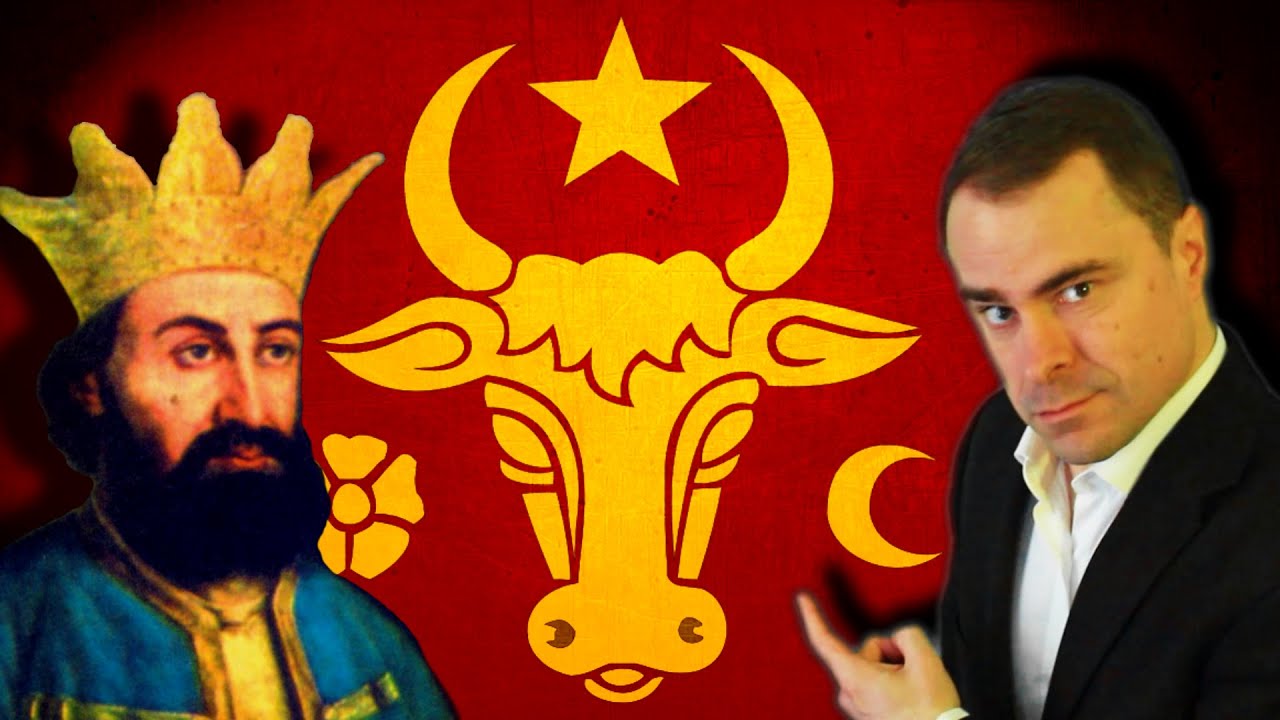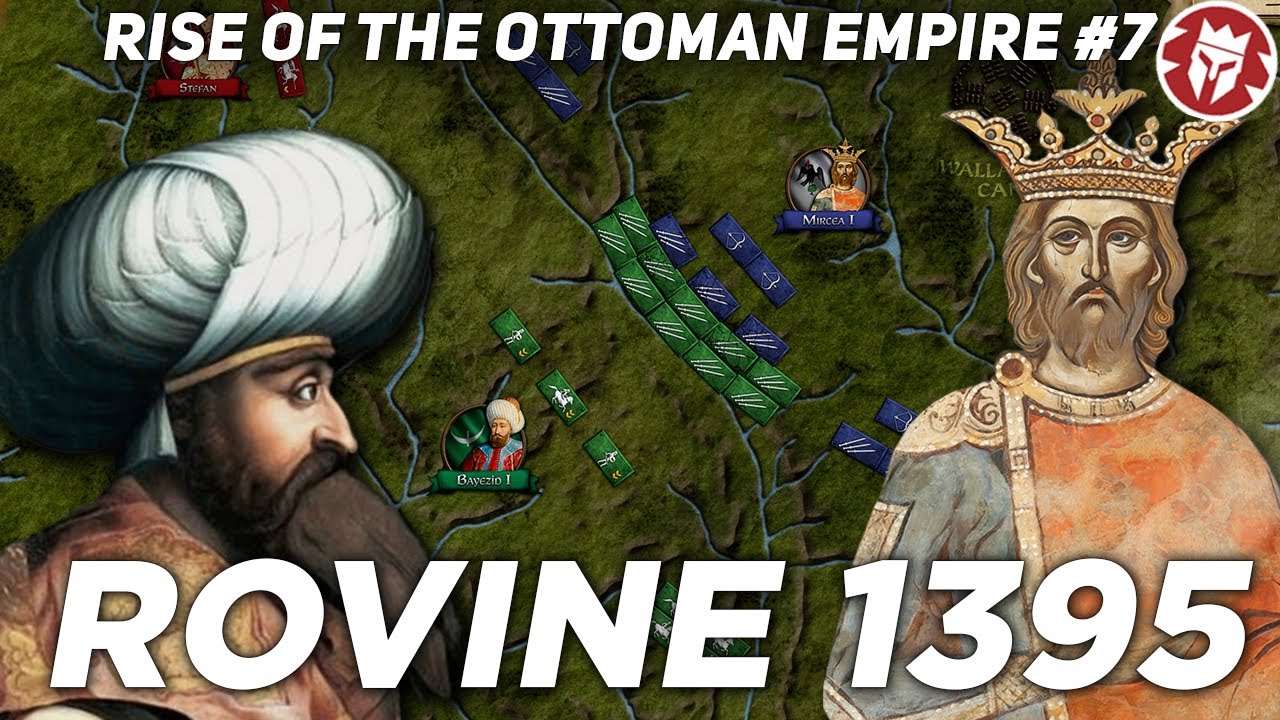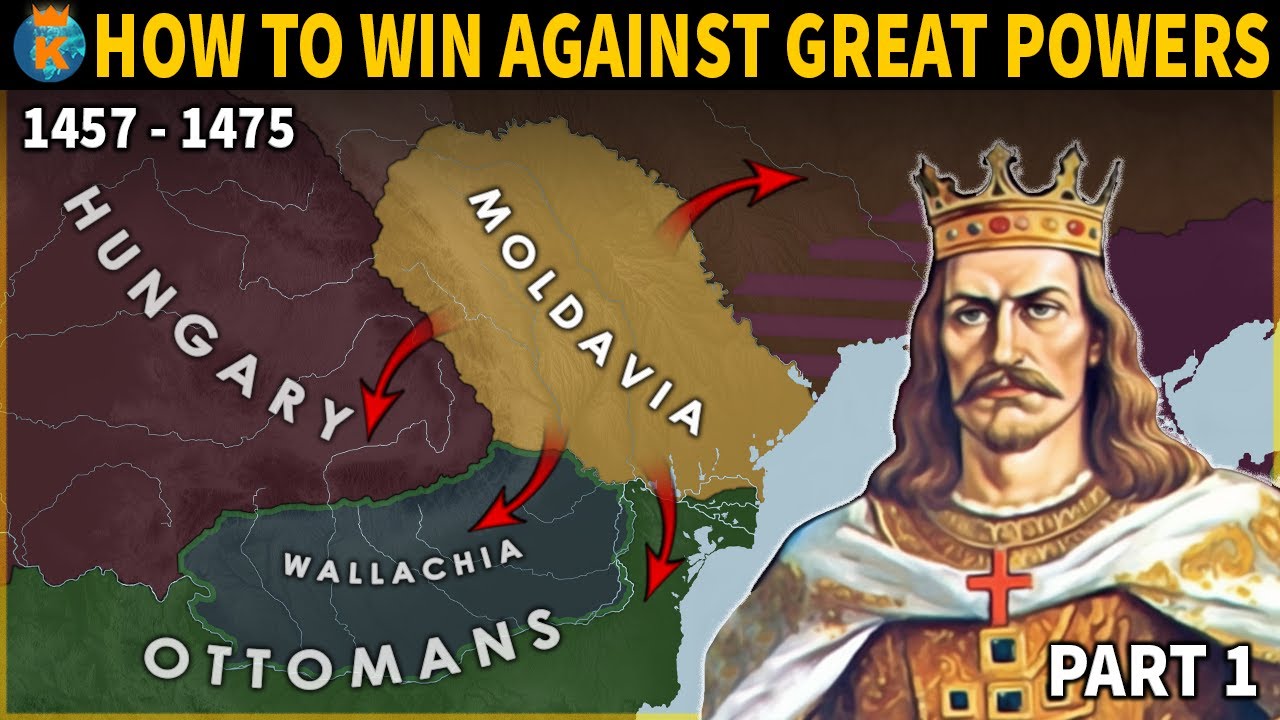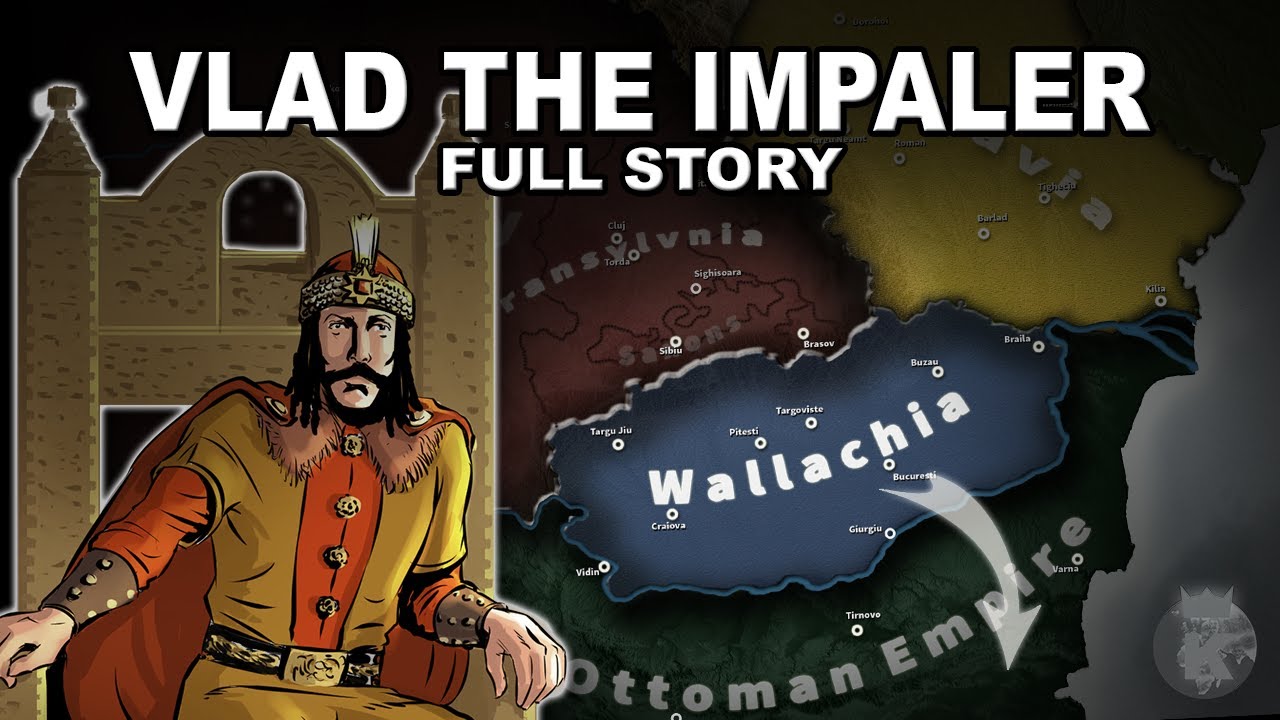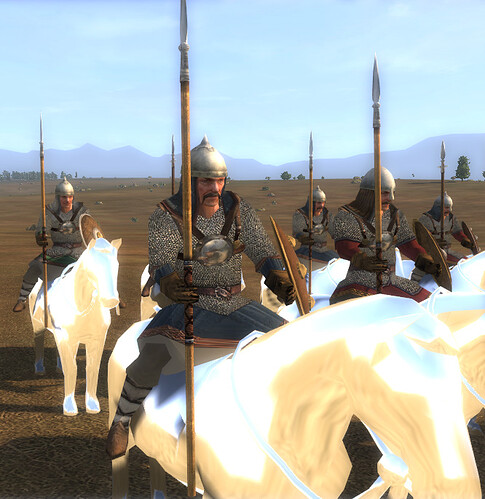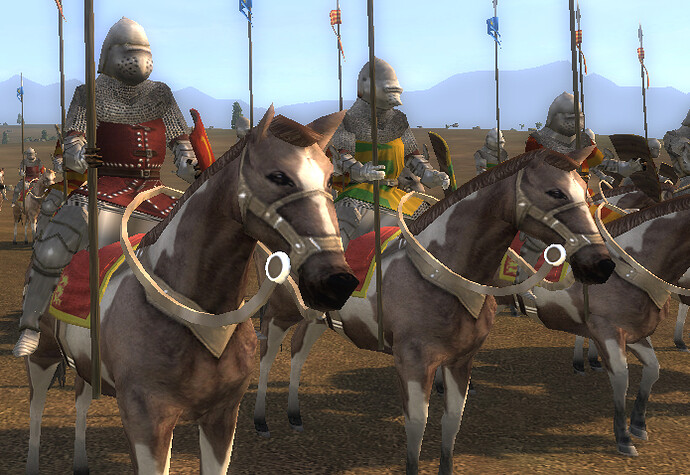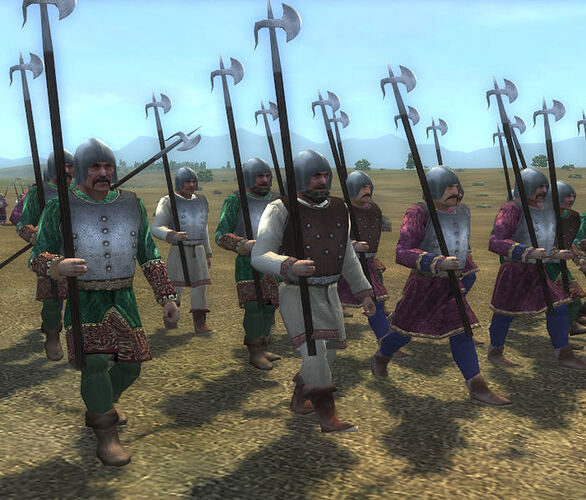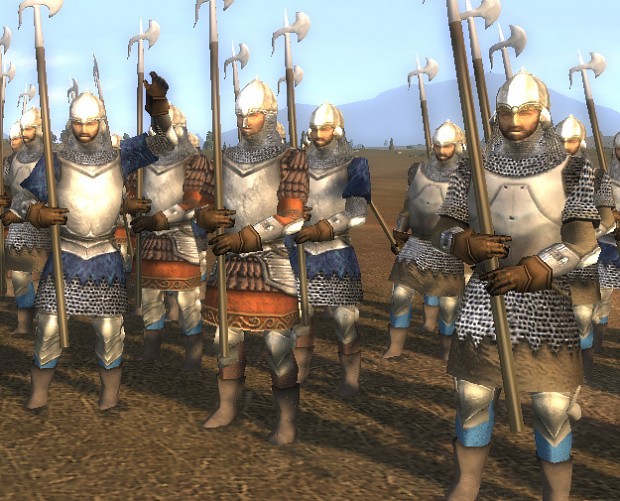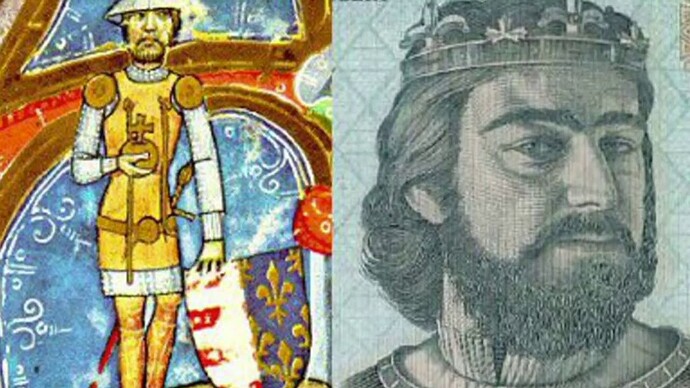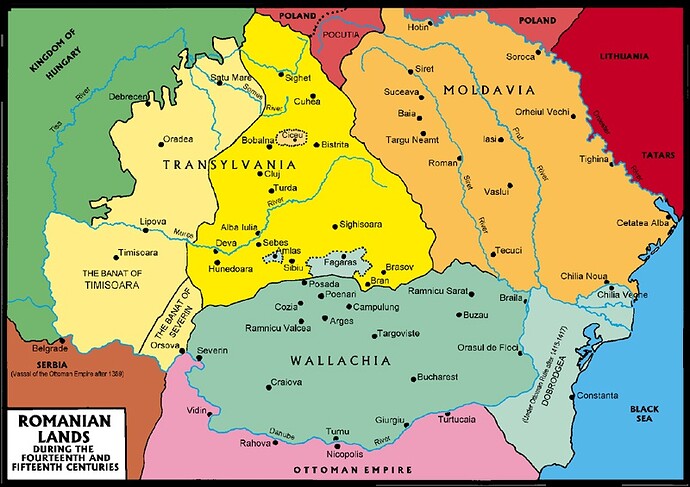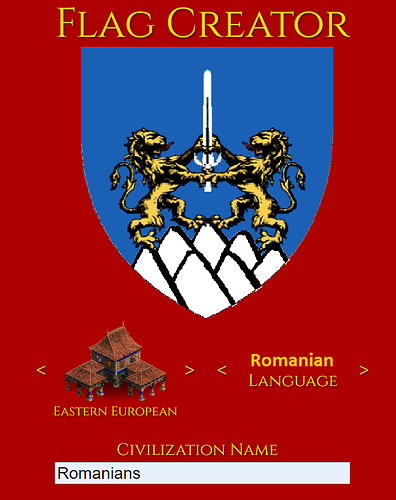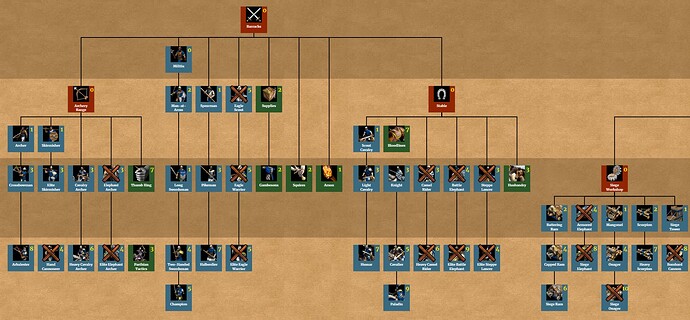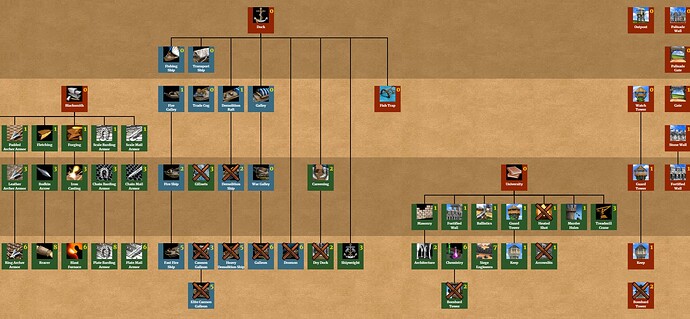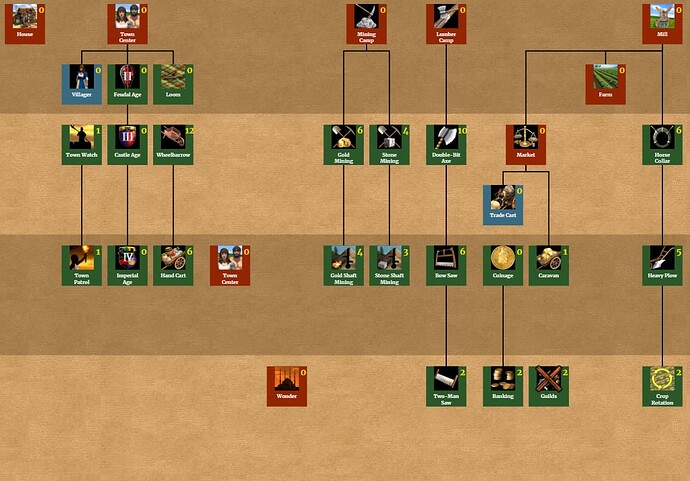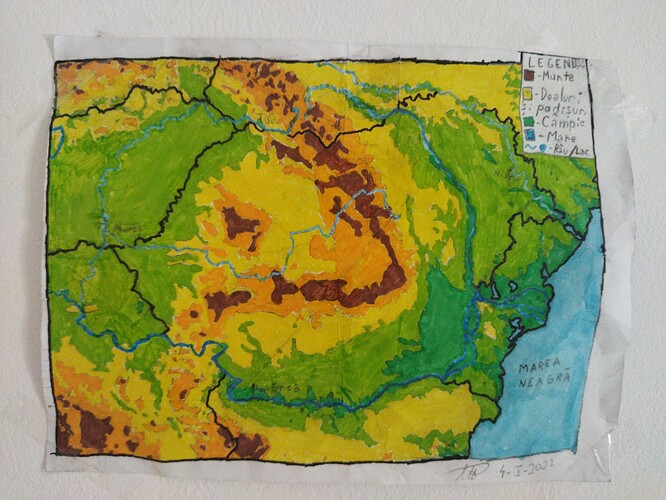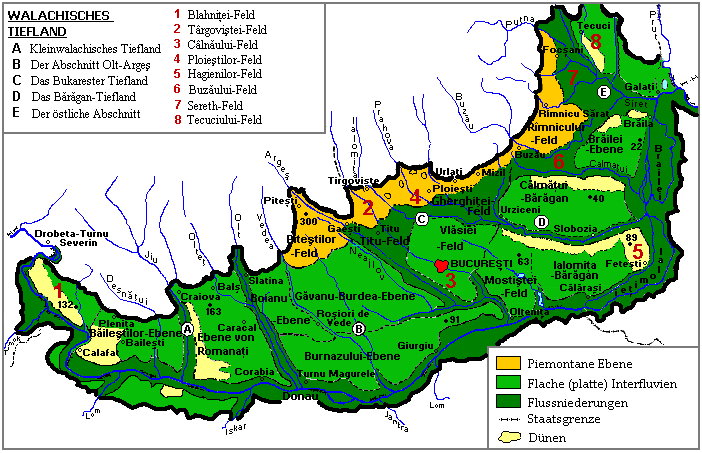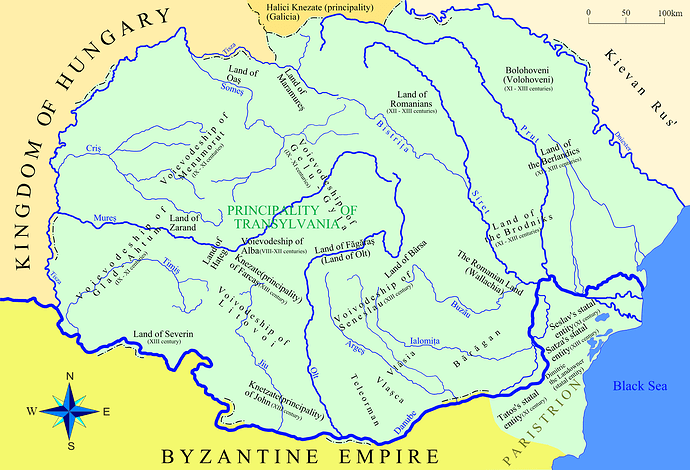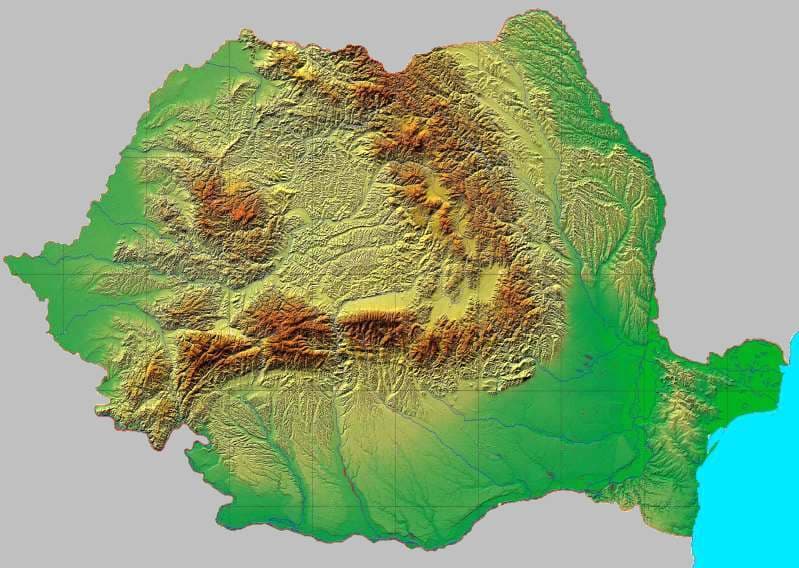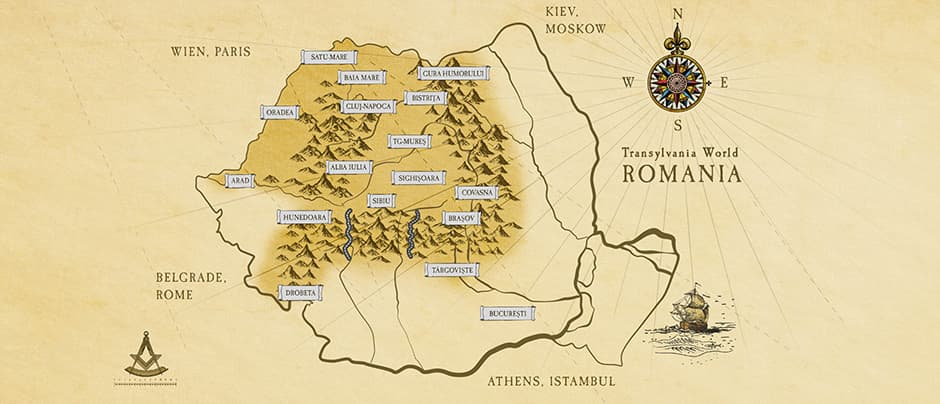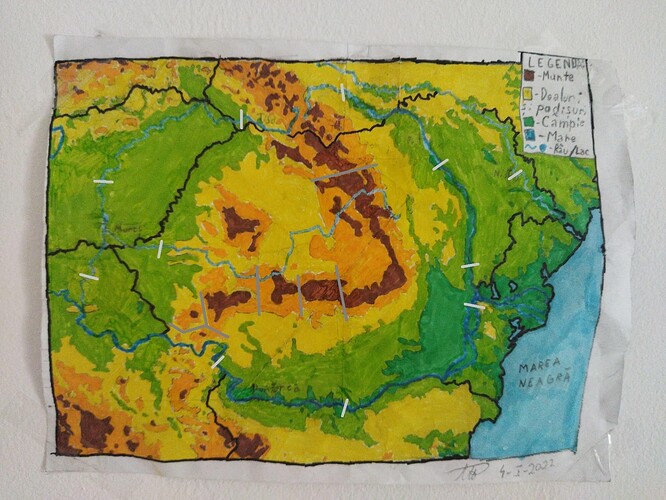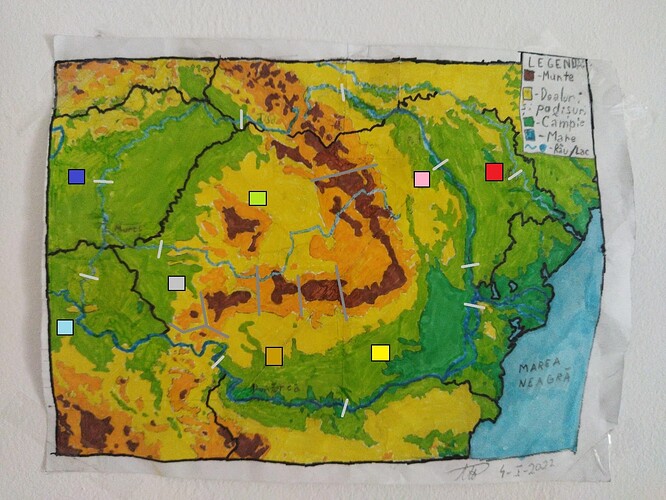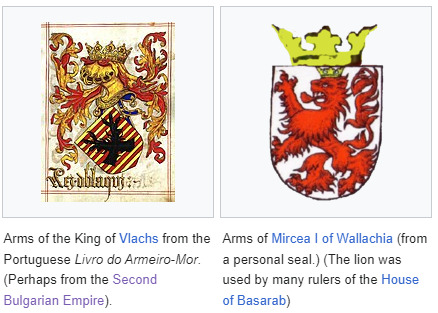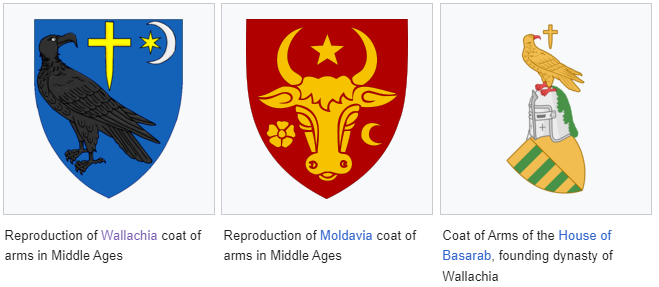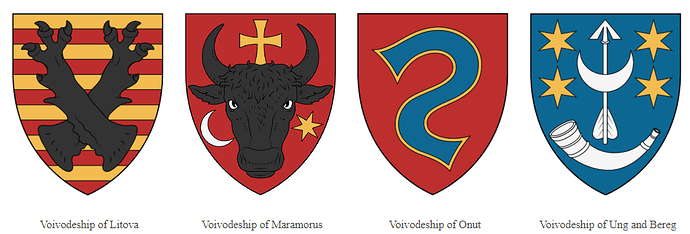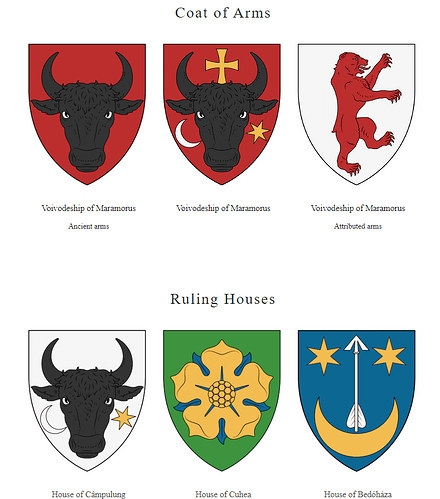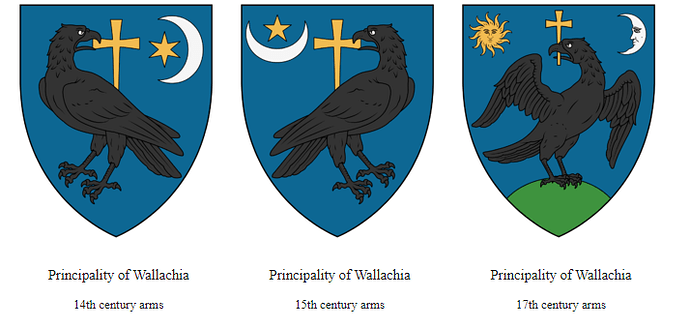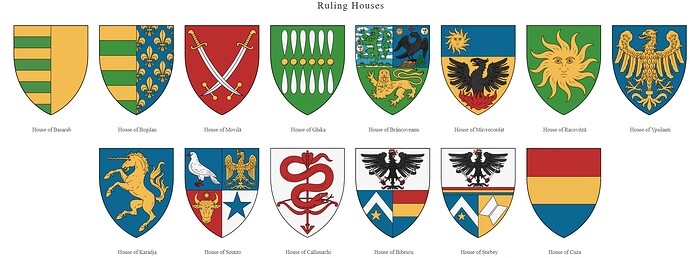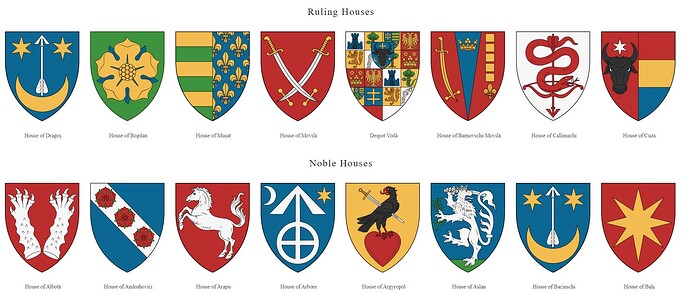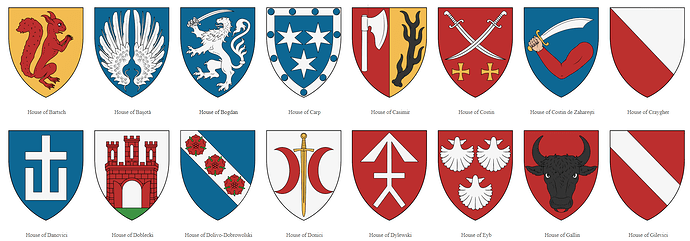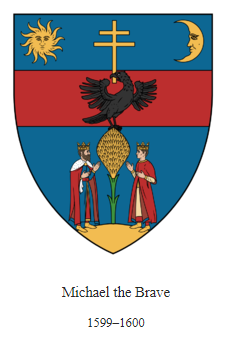Good afternoon, I created this thread so that forum users can share their ideas about the concept of Romania or Wallachia civilization or any related topic. Feel free and safe to do so, but always with respect.
So, to be clear: we are not allowed to create any topics about them anywhere else?
@EliteRiflemann Would you like to have the “Vlachs” in the game? ![]()
ROMANIAN CIV POSSIBLE DESIGN
DETAILS:
Name? Romanians in the middle ages used to be called Vlachs, but they called themselves Romanians, this is not the case anymore but back then it was like how Germany calls itself “Deutschland” but it is called different things by other nations.
Looks? Considering that Romania is Eastern European like the Magyars and Slavs most buildings and units will look the same.
Culture? Like the Slavs, the Romanians had Boyars as nobles and Orthodoxy as religion, the Romanian culture was influenced by the Slavic and Orthodox Christianity comes from the Byzantines.
Speciality? Romanians were used to being outnumbered in most of their battles and usually used hit & run and encirclement tactics. In Moldavia, every peasant was military trained.
Language? You can use modern Romanian, unlike English that changed so much that Old English is a completly different language, Old Romanian and Modern Romanian are mutually intelligible.
AI Rulers? In chronological order:
- Basarab I the Founder (1310 - 1352) - Founder of Wallachia.
- Bogdan I the Founder (1307 - 1367) - Founder of Moldavia.
- Mircea the Elder (1355 - 1418) - Prince of Wallachia, great-grandson of Basarab I.
- Vlad II the Dragon (1395 - 1447) - Prince of Wallachia, son of Mircea the Elder, father of Vlad the Impaler.
- Vlad III the Impaler (1431 - 1476) - Prince of Wallachia, Dracula’s campaign is about him.
- Radu the Fair (1437 - 1475) - Prince of Wallachia, younger brother of Vlad the Impaler.
- Stephen III the Great (1435 - 1504) - Prince of Moldavia, cousin of Vlad the Impaler.
- Alexandru Lapusneanu (1499 - 1568) - Prince of Moldavia.
- Matei Basarab (1588 - 1654) - Prince of Wallachia.
- Vasile Lupu (1595 - 1661) - Prince of Moldavia.
- Michael II the Brave (1558 - 1601) - Prince of Wallachia and Moldavia.
- Constantin Brancoveanu (1654 – 1714) - Prince of Wallachia.
- Dimitrie Cantemir (1673 – 1723) - Prince of Moldavia.
POSSIBLE HISTORICAL DESIGN CONCEPTS:
- Poor siege (Romanians not known for their catapults or great siege)
- Poor ships (again, only having little sea access and a very modest navy needed for trade)
- No chemistry (was a bit late to the part in this department, only around 1600s)
- Weak monks (being orthodox, the church didn’t have such influence as it did for catholics or even the Russian church).
- Access to Arbalest, Champions, Halberdier, Hussar, Paladin (being often outnumbered, the main strength of the Wallachian and Moldavian armies were their diversity, having access to all of these allows for that even if not all of them get a bonus)
- Bonuses to Paladins & Cost Reduction to Halberdiers (the main focus was on the heavy Cavalry who would receive the finest armors from Western Europe and peasantry who were forced to bear arms and learn to fight otherwise they would be senteced to death)
- Late Game civ (Wallachians and Moldavians would almost always pick their battles to ensure victory as they were often outnumbered, I think this translates well to having a worse early & mid games where the enemy has the advantage, making the Romanians a target as historically they were more often than not invaded than invading. You just have to ressist until the late game. Which kind of mirrors a lot of Wallachia and Moldavian wars where they were invaded and just had to ressist until they could build up stronger forces)
- Good troops but no economic bonuses until late (this is to emphasize their quality over quantity approach. At least until the Imperial Age for you can’t have a Late Game civ with no economic bonuses. Mainly because they lacked quantity and had to focus on quality i.e. adopting both West and East fighting philosophy (see Viteji), having always trained peasants who were required by law to carry a weapon (see Portar/Armas), and some of the best armor for their knights (see Venetian Armor for the elite troops - if you watch the videos about rulers who could make for a campaing you will see a pattern).
POSSIBLE CIV BONUSES:
- Knights cost 15% less OR +1 attack in Castle age and another +1 attack in Imperial age (The Order of the Dragon was created with the purpose of defeating the Ottoman Empire. The nickname “Tepes” is the Romanian equivalent of “the Impaler”, “Teapa” means spike in Romanian, the real name of Vlad Tepes was Vlad Dracul, Dracul meant the Dragon)
- Villagres have 20% more armor (Vlach military was strict, every peasant was trained to defend himself and those that refused were put to death)
- Skirmishers fire 20% faster (Since they were most of the time outnumbered, Vlachs used harassment and hit and run tactics a lot)
- Husbandry and Squires free, moved to feudal age (The Vlachs were very fast and arrived unexpectedly fast somewhere catching their enemies and sueprising them before they could organise an defense)
- Units and buildings on lower elevation do not take extra hill damage (reverse Tatar bonus; the Romanians counted on guerilla warfare, hit and run and ambushes to defeat much more numerous opponents)
- Skirmishers +1 attack in Castle age and another +1 attack in Imperial age. (Vlad the Impaler reference)
- Unique Building: Animal Farm building that constantly generates food (Romanians were known as ‘shepherds’ in the first documents that mention them, being a very common profession, especially in the mountain areas. And after the Ottoman conquest making the Romanians ####### they switched to pigs for the Muslims cannot eat pigs; true story, look it up)
- Team Bonus: Villagers carry 20% more food (There was serfdom in Wallachia, affecting Gypsies and foreign slaves but also the local population, most of the population was made of farmers and shepherds)
- Team Bonus: Cavalry +2 damage vs buildings. (Great for hit and run)
ROMANIAN RULERS THAT COULD MAKE FOR A CAMPAIGN (CHRONOLOGICAL ORDER)
1. Bassarab & Bogdan
2. Mircea the Elder
3. Stephen the Great
He was born in 1433, ruled Moldavia between 1457 and 1504, being a ruler for 47 years. He took the throne of Moldavia from his uncle who killed his father to take the throne. At different points he was at war with every neighbour: Hungary, Poland, Tatars, Wallachians and Ottomans. In his lifetime, he had 44 victories out of 46 battles, his only defeats being 2 times at the hand of the Ottomans. He helped was helped and fought alongside Vlad the Impaler.
He was a devout Christian, for each of his 44 victories he ordered a monastery to be built. His most crushing victories were: against Matthias Corvinus of Hungary at Baia, against the Tatars at Lipnic and against Suleiman of the Ottoman Empire at Vaslui and Razboieni, and against John Albert of Poland in Codrii Cosminului.
4. Vlad the Impaler
5. Michael the Brave
Michael the Brave briefly united much of the future Romania (Wallachia, Transylvania and Moldova) under his rule. Acceding to the princely throne of Walachia in 1593, Michael submitted in May 1595 to the suzerainty of the prince of Transylvanian lord Sigismund Báthory in order to secure support against Ottoman rule. He routed the Turks at ########## ### ######## In 1598, he took an oath of fealty to the Habsburg Emperor Rudolf II and also concluded a peace with the Turks.
The following year he attacked his new Transylvanian suzerain Andreas Báthory and defeated him at Şelimbăr. Having now proclaimed himself prince of Transylvania, Michael next conquered Moldavia and assumed the title of “prince of ############### Transylvania, and Moldavia.”
In September of that year, however, the troops of Emperor Rudolf divested him of Transylvania, while Polish forces wrested Moldavia from his control the following month. Reconciled to the Emperor in 1601, he helped suppress a rebellion of Magyar nobles at Gorăslău but was killed shortly thereafter on the order of the imperial general Giorgio Basta. During the 19th century, Michael acquired the reputation among Romanian nationalists as the pioneer of national unity.
POSSIBLE UNIQUE UNITS:
Viteji (Heavy Cavalry) → Literally “Brave Ones” they are soldiers who gained lands and property through bravery in warfare. The viteji are therefore, as expected, among the most resolute and brave warriors a ruler could ask for. Like many elements of Romanian cavalry, the Viteji show influences both from the East and West, and their style of warfare imitates that of Cuman or Tatar armored horse archers. By their nature they are very versatile cavalry. In battle, the Voievod (ruler) would use Viteji to counter the enemy’s cavalry flanks, either by engaging light cavalry/cavalry archers in melee or harassing and exhausting heavy cavalry in range, then providing the decisive charge into the enemy’s flanks.
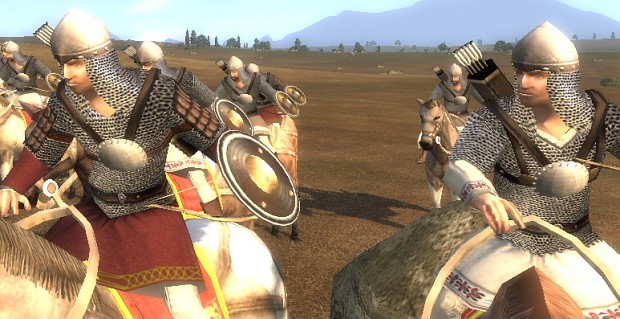
Calarasi (Light Cavalry) → Călăraşi form a part of the “oastea cea mica” (small host) and are part of the “slujitorii” (servants of the lord). Their name implies they fight on horseback. These soldiers were given land in exchange for military service, and retained their land so long as they remained as a readily-available force for the voievod, and exclusively in the service of the voievod. They are lightly armored, comparable to their curteni, and wield a composite bow. They were a very successful military instrument, remaining a significant part of the Wallachian army up until 1600, and form a potent counter to other horse archers.
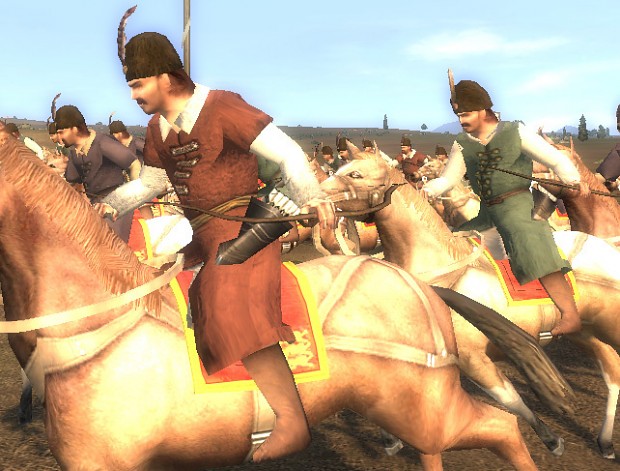
Curteni (Light cavalry) → Literally “Men of the Court” they are the retainers of the boyars whom he takes into battle on horseback. Historically, they acted as a small mounted detachment under the direct command of a boyar. They are not as competent as the Viteji, nor as fast as the Calarasi, but given the tradition of light cavalry in Wallachian armies, they are form a versatile screen for the Calarasi. Their armor is very light, though this aids in their speed. They wield a spear or a lance in battle, omitting the benefit of a ranged weapon in favor of a large shield. They can perform devastating charges repeatedly due to their light equipment, but should not be expected to hold off a well-armed opponent.
Nemesi (Heavy Cavalry) → Are the equivalent of the Viteji but armed with spears instead of bows. This will be the strongest cavalry unit before the Boyars and the Princely Bodyguard.
Princely Bodyguard (heavy cavalry) → The Voievod of Wallachia keeps at his side a bodyguard of warriors paid from his own coffers, either consisting of native troops or mercenaries. Only the most loyal boiers, often those serving on the princely court, were entrusted with protecting the voievod. These men are equipped with the finest arms and armor money can buy, often with platemail bought from Venice or other Italian cities. It was even said in a chronicle that the Wallachian voievod Vladislav-Vlaicu bought 10,000 suits of Venetian plate armor in anticipation of warfare against the Hungarians. These form the elite of Wallachian heavy cavalry.
Boyars → The boieri form the elite of Wallachian society and Wallachia’s heavy cavalry. They are the Wallachian nobles, who own vast swathes of land and rule over dependent peasants. Dressed in heavy armor, atop powerful mounts, and fighting in a style reminiscent of Western knights, they are a powerful force on the battlefield. The boieri however, are very accustomed to the game of political intrigue, and it is a telling fact that most of the Wallachian princes died of Wallachian swords and assassination than of old age, or on the field of battle. It is more telling that 20 princes were quickly cycled onto the Wallachian throne from 1418 to 1456, averaging to short and ineffective two-year reigns. The state of chaos caused by the boieri during this time was so great that when Vlad III Tepes came to power he immediately had many of then killed (some of whom had actually assassinated his father and his older brother Mircea), deposed others from the princely council (replacing them with obscure or foreign nobles) and tried to promote the land-owning Mosneni as a counter-weight against them. Even so, the Boiars would rebound after Vlad III’s death, becoming a powerful force. If a voievod can keep them satisfied and loyal, the boieri will form a decisive force on the battlefield and a much-needed unit of heavy, melee-based cavalry.

Portar → Literally “Gatekeeper”, the Portars are Moldavian heavily armored pikemen. The Romanian principalities relied mainly on hit and run tactics with light cavalry and archer units so the Portar will be a valueable anti-rush unit for defense.
Armas → The Wallachian counterpart of the Portar, these are the elite and most loyal infantry any voievod can have. Formed in the 15th century by Vlad Dracula and kept ever since, this powerful corps of infantry were used to counter-act the growing power of the Boyars, and are the only professional, non-mercenary force in the Wallachian army. Alongside their military role, they also act as a corps of gendarmes, keeping order in the country and upholding the voievod’s laws. They were the underlings of the Armas, a boyar who was a member of the Princely Council. They are professional soldiers, paid from the voievod’s coffers, and remain fiercely loyal to him. They are armed with halberds or other polearms, and dress in the best armors available. They are possibly the best-supplied footmen in the country.
Since most new factions now have 2 unique unit: the Romanians can have Portar as a unique upgrade to the Halberdier and something like Viteji for the castle. With the Castle UT being an upgrade for for the Knight like and the Imperial UT being an economic bonus.
CAMPAIGN SCENARIO FOR BASSARAB & BOGDAN (1330/1345):
Historical context:
- There is a total of 6 missions
- In the first 3 you play with Bassarab
- In the last 3 you play with Bogdan.
TL;DR - The Kingdom of Hungary wanted to create buffer states between them and the Golden Horde to avoid another invasion. So they set up 2 vassal states in Wallachia and Moldavia. Eventually both revolted and became independent.
Bassarab, in Wallachia:
In Wallachia: Basarab became ruler of Wallachia in 1310, he revolted against the Kingdom of Hungary in 1325 and took the Banate of Severin from Hungary (de facto independent). The independence was still unrecognized by Hungary. When Michael Asen III attacked Serbia he supported the Bulgarians but were defeated at the Battle of Velbazhd in 1330. The same year, with the Wallachian army defeated, Charles I of Hungary invaded Wallachia with 30.000 men, he was allowed to take Targoviste and plunder Wallachia with no ressistance, but when he was returning home the Wallachian army of 10.000 men awaited him at the Transylvanian passes, where the Wallachians ambushed and almost annihilated the royal troops in the Battle of Posada. But the Kingdom of Hungary wouldn’t recognise Wallachia as independent until 1344.
According to a contemporary account: The Wallachian army, led by Basarab himself, probably numbered less than 10,000 men and consisted of cavalry, infantry archers, and some locally recruited peasants. When Charles saw his best knights being killed, without being able to fight back, while the escape routes were blocked by the Wallachian cavalry, he gave his royal robes and insignia to one of his captains, who died under a hail of arrows and stones, and, with a few loyal subjects, made a difficult escape to Visegrád clad in dirty civilian clothes.
I can see 3 missions made out of this:
- Our Disloyal Subject → Capture Severin from Hungary.
- The Price of Arrogance → Help Michael Asen III attack Serbia and escape with your life when it fails.
- The Battle of Posada → Gan independence for good by defeating Hungary at Posada with inferior army.
Bogdan, in Moldavia:
Dragos was made ruler of Moldavia by the Hungarians in 1345 (one year after Hungary recognised Wallachia’s independence). He was succeded by his son Sas in 1353, who was then succeded by his son Balc in 1359. But around the same time, another Romanian, Bogdan, who has been the Duke of Maramures (inside Hungary, Transylvania) since at least 1342 (first mention of him). He fell into conflict with King Louis I of Hungary and requested the support of a Romanian knez (Count) below him in 1349. Giula refused, and Bogdan invaded and took his lands. King Louis I of Hungary demanded Bogdan restore Giula’s lands but he refused. Bogdan stood in disgrace with the King of Hungary, but none of them were able to make a move against the other.
Learning that the Romanians in Moldavia were opposed to King Louis I’s authority, when Sas died in 1359, Bogdan left Maramures and went to Moldavia where he took command of the already existing Moldavian revolt and defeated Balc, who fled for Hungary. In retaliation, Louis I of Hungary confiscated Bogdan’s domain in Maramureş and donated it to Balc. In retaliation, Bogdan declared Moldavia independent from the Kingdom of Hungary
In retaliation, Louis I of Hungary launched several expeditions against Bogdan I (but their dates cannot be determined, we can only know that they took place between 1359-1365) that ended in failure and Louis I of Hungary eventually recognised Moldavia’s independence.
I can see 3 missions made out of this:
- A Clash of Counts → Bogdan I fights his own count, Giula, also a Romanian but he is loyal to the King of Hungary.
- To Greener Lands → Bogdan I leaves for Moldavia with his army, to support the Romanian rebels against the newly coronated Balc.
- Final Straw → Displesed with Bogdan’s declaration of independence, the King of Hungary finally has a pretext to wipe out Bogdan for good, coming with an army in Moldavia.
(The King of Hungary attacked multiple times, but having multiple missions of the same thing would be repetitive)
Cutscenes, storyline:
TL;DR - It’s year 1633 (the actual campaigns take place in 1310/1345) and a native Moldavian named Grigore Ureche narrates the “origin of his people” to Władysław IV in the Polish–Lithuanian Commonwealth.

Grigore Ureche
Grigore Ureche (Romanian pronunciation: [ɡriˈɡore uˈreke]; 1590–1647) was a Moldavian chronicler who wrote on Moldavian history in his Letopisețul Țării Moldovei (Chronicles of the Land of Moldavia), covering the period from 1359 to 1594. Grigore Ureche was the son of the influential Moldovan boyar Nestor Ureche, who was an advisor to a prince in Poland. Ureche spent his childhood in the Polish–Lithuanian Commonwealth, where he studied at the Jesuit College in L’viv. After returning to the Princ…
More expanded:
The intro narration could begin in 1633 at the start of the Polish-Ottoman War of 1633-1634. But the actual campaign takes place some 300 years before that. Knowing he will have to face the Wallachian and Moldavain troops who are loyal to the Ottomans, one of his advisors, Grigore Ureche, who is of Moldavian origin, starts telling him about the story of his people, how they became a free people.
PLAYING AS BASSARAB.
Mission 1 Intro → Our Disloyal Subject: (possible co-op partner Nicolae Alexandru, Bassarab’s son and general)
Władysław IV: Grigore.
Grigore: Yes, my lord?
Władysław IV: The war with the Turks is about to begin, in order to reach the Ottoman territory I will have to cross Moldavia and Wallachia, you were born there, weren’t you? Tell me about these vlachs, maybe I can convince them to side with me against the Ottomans.
Grigore: Yes, my lord. But my people do not call themselves, vlachs, that what they are called by others, it comes from an old germanic word for “stranger”, my people call themselves “romanians” from the latin ######### meaning “citizen of the Roman Empire”, we still consider ourselves of Rome. And our country that you call “Wallachia”, we call it “Țeara Rumânească” meaning “the Romanian land”.
Władysław IV: Enough with these details, I want to know if there is a way to make the romanians switch sides.
Grigore: My people have a way with wars for independence, you see, before we were under the Ottomans we were under the Hungarians, it all began when the Hungarians drove out the Mongols, in order to secure their eastern border, they organized the native population in a client state, but that would only last until 1310 when Basarab revolted and attacked Severin. Basarab would not be the first romanian to revolt against the Hungarians, Litovoi revolted in 1277 only to be killed and replaced by his brother, Bărbat, but Basarab would be the first to succeed.
→ In the actual mission, you could begin with an army and some villages, and your goal is to capture a heavily fortified town (Severin).
Mission 1 Outro:
Grigore: And so Basarab captured Severin. The Hungarians would not let this treason go lightly. They prepared their forces, but bid their time, waiting for the perfect time to attack.
Władysław IV: Hmm, so they can’t be trusted as a vassal state.
Mission 2 Intro: → The Price of Arrogance: (possible co-op partner: Bulgarian ruler Asen III)
Władysław IV: What then? He got his independence but the Hungarians would not forget this.
Grigore: Then, Bassarab became arrogant, he saw himself independent and started dwelling into international politics, he supported the Michael III of Bulgaria agains the Serbs, it was almost his undoing.
→ In the actual mission, your troops have an ally, and you have to defeat the Serbs, afterwards, reinforcements arrive and you have to retreat with Bassarab (at least he should escape) before you are found and killed.
Mission 2 Outro:
Władysław IV: I’m sure this is the moment the Hungarians were waiting for, with his army scattered he would stand no chance against the full Hungarian army.
Grigore: The Hungarians were just as sure my lord.
Mission 3 Intro → Battle of Poasda:** (possible co-op partner Nicolae Alexandru, Bassarab’s son and general)
Władysław IV: So, what happened then?
Grigore: Rather than facting the enemy army directly, and you will see this is a running theme among our people, Bassarab picked his battles, he knew he could not face the Hungarian army head on, so he had to improvise, avoid them until he found an advantageous terrain and the Hungarian army unaware. His army of conscripted peasants could not compete with the Hungarian knights, at least not head on.
→ In the actual mission, you being in Wallachia, with various towns: Poenari, Campulung, Argesi, Targoviste (the capital), the Hungarian army invades with Paladins and Champions, you have mainly Pikemen and Archers. You have to avoid the Hungarian army on the map (they will go and destroy each town, you can try and ressist but won’t be able to do much), while recruiting troops for your main army. And hopefully upgrade to Halebardier and Arbaletist. Then there is a narrow passage at Posada, you will have to prepare your forces and hold your army there, when the Hungarian army with vast superior numbers retreats, you will have to fight there. With your Halebariers on Paladins and Arbaletist on Champions.
Mission 3 Outro:
Grigore: When Charles saw his best knights being killed, without being able to fight back, while the escape routes were blocked by the Wallachian cavalry, he gave his royal robes and insignia to one of his captains, who died under a hail of arrows and stones, and, with a few loyal subjects, made a difficult escape to Visegrád clad in dirty civilian clothes.
Władysław IV: And that was the end of the Hungarian dominance over Wallachia?
Grigore: No, my lord. The Hungarians would not recognize Wallachia’s independence until 1344, when they left Wallachia alone to create another vassal state between themselves and the Golden Horde. History repetead itself.
A map for reference:
PLAYING AS BOGDAN I:

Mission 4 Intro → A Clash of Counts: (possible co-op partner Stefan Musat, Bogdan’s nephew and general)
Władysław IV: That is Moldavia, correct?
Grigore: Yes, my lord. Dragos was made ruler of Moldavia by the Hungarians in 1345, but unlike Bassarab, he was loyal, his son Sas and grandson Balc were equally loyal.
Władysław IV: How did Moldavia became independent then?
Grigore: Because of another disloyal ruler, Duke Bogdan of Maramures, he was not even in Moldavia but in Transylvania, yet he fell into conflict with King Louis I of Hungary but none could make a move against the other. In order to have a strong and loyal army, Bogdan seeked first to secure the loyality of those below him, and so he came into conflict with another romanian, count Giula, who refused to support Bogdan reaffirming his loyality to the crown of Hungary.
→ In this mission you play as Duke Bogdan and have to defeat Count Giula, also a romanian.
Mission 4 Outro:
Władysław IV: Wouldn’t King Louis I punish this violation?
Grigore: He demanded Bogdan restore Giula’s lands but he refused, using whatever pretext he tought best to avoid open rebellion and bide his time.
Mission 5 Intro → To Greener Lands (possible co-op partner Stefan Musat, Bogdan’s nephew and general)
Władysław IV: It seems the king and duke were locked in a stalemate.
Grigore: Yes, my lord, each of them waiting for the perfect opportunity to strike against the other. The perfect time for Bogdan to strike was in 1359 when Dragos’ grandson, Balc, would be crowned prince of Moldavia. There was already an existing revolt in Moldavia, against the ######### dynasty. The king of Hungary would not be concerned as he knew the new prince would be loyal to him. Little did the king know, taking advantage of the instability caused by the death of Sas and the inexperience of his son, Balc, Bogdan set his eyes to become the new prince of Moldavia, crossing the Carpathians with an army and taking the command of the revolt.
→ You play as Bogadan, cross the Carpathians into Moldavia and try to convince various nobles to support you instead. When you have enough support you march on the city of Suceava and capture it. Balc flees to Hungary.
Mission 5 Outro:
Władysław IV: An ambitious man this Bogdan was. It was at that time that Bogdan declared independence?
Grigore: No my liege, he still needed a legitimate reason. When Balc fled for Hungary, Louis I confiscated Bogdan’s domain in Maramureş and donated it to Balc, this was the justification Bogdan needed to declare Moldavia independent from the Kingdom of Hungary, each of them could accuse the other of not respecting their oath of vassalage without losing face.
Mission 6 Intro → Final Straw (possible co-op partner Stefan Musat, Bogdan’s nephew and general)
Władysław IV: Now the story begins to be similar to that of Wallachia, what happened next?
Grigore: The Hungarians sent three armies, unlike Bassarab’s recently defeated army in Wallachia, Bogdan’s army was more than ready to fight the Hungarians attacks. And Bogdan pushed back the Hungarian army, again, and again.
→ You play as Bogadan, now prince of Moldavia, waves of Hungarian armies come from the Carpathians, you have to protect your cities (Suceava - the capital, Baia, Siret, Iasi) and defeat the Hungarian armies.
Mission 6 Outro:
Grigore: And that is how we became independent, my lord. We would enjoy roughly a century of independence until the Ottomans came from the south, we weren’t incorporated into the Ottoman Empire without a fight, and due to our stubbornness remained vassal states who would have to pay yearly tribute to the Sultan, and although we had certain rulers that rose above and successfully resisted the Ottomans, we could not compete with the might of the Ottomans, and we soon found ourselves under the claw of the Ottomans again. David does not always beat Goliath. But times will change my lord, in time, it will.
INCORRECT EVENTS & SUGGESTIONS IN VLAD DRACULA’S CAMPAIGN:
- Make the player faction always be Romanians.
- Fix historically inaccurate events (more below)
- Add possible co-op (more below)
- Add real life heroes for mission 1 & co-op partner (more below)
- Add another mission between missions 2 & 3 (more below)
Source: https://www.youtube.com/@CorpusDraculianum/videos
"This is the official channel of the international research project CORPUS DRACULIANUM, the main authority in the study of the life and times of the Wallachian voivode Vlad III the Impaler Drăculea (1431-1476). This channel provides exclusively scientific researched and referenced facts packaged in a format easy to absorb by the general public and history buffs: no vampires, no Balkan stereotypes, no commercial non-facts, only source-based history!
We are professional historians from universities and scientific institutes in Germany and Romania. We spent more than a decade finding hundreds of medieval documents and chronicles on Vlad Drăculea in many archives and libraries.
We are sharing our knowledge and the latest key findings, which help us look beyond the myths and legends of Drăculea."
FACTUALLY INCORRECT EVENTS:
-
During Mission 1 → You have 3 Romanian voivods. There are 3 issues with this:
a. The name of lords/dukes in Wallachia and Moldavia was boyars. Voivod, at the time of Dracula, meant ruler of the country. Only Dracula himself was voivod. So the 3 random voivods should be 3 random boyars.
b. Jakub, Mircea and Istvan are not real people who helped Vlad the Impaler, they’re randomly named.
c. Jakub and Istvan are not even proper Wallachian names. Only Mircea is a Wallachian name. And they are supposed to be Wallachian noblemen. -
End of Mission 2 → At the end of the intro in the 2nd mission it says: “Bogdan II, Dracula’s cousin and the new Voiveod of Moldavia”. This is not correct. Bogdan II was Dracula’s uncle. The creator of the campaign in Forgotten Empires likely confused him with his son. His son, was Vlad’s cousin, he was Prince Stephen who helped him take back Wallachia in this 2nd mission. And after becoming the new Voiveod of Moldavia (because of other events not in the scope of this campaign) would help Vlad take back Wallachia from the last time in Mission 5. So if a voice editor could be used to change “cousin” into “uncle” it would be great.
Wallachian & Moldavian politics would put Game of Thrones to shame since rulers would change quickly, so I understand Forgotten Empires Team’s mistake, but it would be a nice detail for historical accuracy.
This is the timeline in Moldavia:
→ Bogdan II
→ Vlad comes, his cousin Prince Stephen helps him.
→ While Stephen is in Wallachia is father is killed by his uncle who takes the throne.
→ Vlad the Impaler helps Prince Stephen to take back his throne (not a mission in the game)
→ Prince Stephen becomes Stephen III of Moldavia, and actually rules for 47 years (unique in W&M at time)
→ Stephen III of Moldavia ne(textGetsCensored)ciates Vlad’s release from Hungary and helps him take Wallachia in mission 5.
-
End of Mission 4 → Not sure why this isn’t mentioned, but it’s worth pointing out that Vlad was waiting for reinforcements from Hungary, as they promised since the beginning of the war (they were supposed to arrive since mission 3 at Giurgiu). Instead, King Mathias betrayed and imprisoned Vlad. Perhaps this should be mentioned in the outro. Basically, King Mathias tricked Vlad to fight a war alone, promising he’ll come with the army in Wallachia but never did, and when he lost, King Mathias imprisoned him to secure good relations with the Ottomans. (Kind of poetic, Vlad hated treachery)
-
End of Mission 5 → Fixing the historical inaccuracy at the end saying he died in battle. Actually he won. This can be easily checked by Wikipedia saying he reign 3 times. He died 1 and a half year after that, betrayed by the boyars and given to the Ottomans (which is ironic considering he hated treachery the most). But he didn’t die in that battle as the game says.
POSSIBLE SOLUTIONS TO INCORRECT EVENTS:
Instead, the first mission should use real people who actually helped Vlad III instead of generic nobleman names:
- Vlad the Younger (nobleman & brother; the youngest of the 4 brothers: Mircea, Vlad, Radu, Vlad; he was not sent to the Ottomans and supported Vlad the Impaler when he returned; he would rule in 1481 as Vlad IV the Monk being placed on the throne by Stephen III of Moldavia, until 1495 when he was ousted by Mihnea the Evil, son of Vlad the Impaler. But in Vlad the Impaler’s life, he was a loyal ally)
- Vintila Florescu (nobleman)
- Neagoe de la Strehaia (most powerful of his allies, nobleman, ruler of Craiova)
- Giacu Balaceanu (nobleman)
- Udriste Manea (nobleman)
- Commander Gales (nobleman & general, he failed to attack the Ottoman Camp from the east during the night attack, while Vlad the Impaler attacked from the west; some sources blame Gales for the failure of the night attack and wonder why he didn’t attack, whether it was intentional or miscommunication)
Mission 1: * Wallachian Boyars (Romanians): The three boyars control fortified positions in the southern half of the map, Vintila Florescu commanding the east, Neagoe de la Strehaia the center and Giacu Balaceanu the western force. They each give Vlad a quest and grant control of some of their troops upon initiating their quests.
Mission 2 Outro: Bogdan II, Dracula’s uncle and the new Voivod of Moldavia, had heard of his kinsman’s plight and offered his help. If Dracula could cross the Carpathian Mountains into Transylvania and ally with Hungary, then they could launch a three-pronged assault on Vladislav II and the Turks.
Mission 4 Outro: * (…)I watched Dracula’s boat float downstream.
I heard he went to Transylvania to receive help from the king of Hungary, but he was betrayed an imprisoned.
The stone bastions of Poenari never caught flame, so I was spared(…).
Mission 5 Outro: All of the outro text is incorrect. It should be remade, stating that he won, and his cousin Stephen III of Moldavia left him 200 bodyguards and left, Dracula tried to stabilize his rule once more, but the boyars betrayed him and gave him to the Ottomans. Perhaps the campaing could be ended with this real life Dracula quote:
“When a man or a prince is powerful and strong at home, then he will be able to do as he wills. But when he is without power, another more powerful than he will overwhelm him and do as he wishes” - Vlad the Impaler
HEROES FOR THE CO-OP PARTNER AND MISSION 1 BOYARS (NOT VOIVODS):
All of this ^ was fixing an incorrect depiction of events. This is not about fixing an incorrect depiction of events so it’s optional. Vlad Dracula’s campaing has the potential of being a co-op campaing:
- In mission 1, player 1 could play with Dracula as Romanian (loyal Wallachian retinue) and player 2 play as Turks (Mustafa Hassan gave him the Turkish troops but didn’t personally lead the army).
- In mission 2, Prince Stephen could be the co-op partner. (real person)
- In missions 3 and 4, Commander Gales could be the co-op partner. (real person)
- In mission 5 Stephen III of Moldavia could be the co-op partner. (real person)
The following characters could be Heroes:
- Vintila Florescu, Champion (pro-Dracula boyar from mission 1)
- Neagoe de la Strehaia, Paladin (pro-Dracula boyar from mission 1)
- Giacu Balaceanu, Arbalester (pro-Dracula boyar from mission 1)
- Prince Stephen, Hussar (Dracula’s cousin from mission 5, not yet voivod)
- Stephen III of Moldavia, Paladin (Dracula’s cousin from mission 5, voivod)
- Commander Gales, Knight (general in service of Dracula in missions 3 and 4)
A POSSIBLE 6TH MISSION BETWEEN MISSIONS 2 & 3 - THE DEBT OF THE DRAGON
Making reference to the fact that Vlad pays his debt to Prince Stephen. → The Invasion of Moldavia to depose Prince Stephen’s uncle (Petru Aron) who just killed Stephen’s father to take the throne.
You invade Moldavia from the south with 2 Romanian armies (in co-op), one led by Dracula another led by Prince Stephan, and have to capture Doljești, Orbic and finally the capital city Suceava. After that Petru Aron flees to Poland an Stephen is crowned king/voivod.
In this mission, just like in mission 2, the player 1 is Dracula and player 2 is Prince Stephen.
I’m not one to play AoE2 often, but it wouldn’t be a bad inclusion in the game imo.
I think the same.
Here in the forum there are good concepts for an independent Vlach civ. They also already have their own Campaign icon and Vlad Draculea as hero. The only thing that is missing, is this civ themselves with unique units, buildings and technologies. I wait for it !
ROMANIAN CIV CONCEPT & REASONING
Given their history with:
- Being invaded themselves in 90% of battles.
- Having a smaller army than the enemy.
- Using hit&run tactics to drain the enemy before the final blow.
- Focus on cavalry but versatile units all around (except gunpowder which came late)
- Implementing both east (mounted archers) and west (knights) units sometimes in the same unit.
I designed this civilization to:
- Excel in defense during the Dark to Castle Ages and transitions into a strong economy in the late game.
- Have above average units in Dark to Castle Ages but the downside is little to no economic advantage. Meaning you will almost always have less units than the enemy in true Wallachian & Moldavian style.
- Only get a good economic bonus late game (2nd unique technology) in order to incentivize the enemy players to attack the Romanian civ as it happened historically before they reach late imperal age.
→ Eastern European architecture
→ Romanian Language. As Romanian is one of the most conservative languages in Europe, Old English is not mutually intelligible with Modern English, this is not the case for Romanian. Neascu’s Letter from 1521 is mutually intelligible with Modern Romanian.
→ Flag: Michael the Brave’s Coat of Arms.
There were a few options for the Flag: House Draculesti (Vlad the Impaler’s noble house), Wallachia’s Coat of Arms and Moldavia’s Coat of Arms. However, I believe Michael the Brave’s coat of arms would be most representative for Romanians as an umbrella Wallachians, Transylvanians and Moldavians civ because he was the first to briefly unite Wallachia, Transylvania and Moldavia in 1600-1601. Where as you could make the argument that the other coat of arms only represent a part of the Romanians.
The military buildings are very versatille:
Again, pointing out to Wallachia & Moldavia’s jack of all trades army. One significant difference however is the lack of gunpowder units, so you aren’t really that flexible.
The docks are terrible, don’t try to use them on water. While the blacksmith and university gives good options. Their issue is going to be lack of economy not lack of options.
Good castle but terrible monks. Use them for relic and forget about them. While the population was very religious, this Heresy and Faith, the Church never had that much influence as in other states. There was always a separation of church and state simply because of this. In Catholic countries and Russia the church had way more influence over state affairs than in the Romanian principalities.
Good economic bonuses for late game.
Ok, so overall the tech tree looks very open, so what is the catch? The catch is the bonuses.
Civilization Bonuses:
- Small Host: Light Cavalry and Hussars have +20% HP.
- Trained Population: Barracks units have +1/+2 armor in Feudal/Castle Age.
- Drăculești Fortifications: Defensive structures (Towers, Walls, Castles) have 10% more hit points.
Unique Unit: Viteji
(Light Cavalry with Range Attack) → 65 Hit Points, 7 Melee Attack, 6 Pierce Attack, 4 Range, 0 Melee Armor, 2 Pierce Armor.
Elite Viteji → +15 Hit Points, +1 Melee Attack, +1 Pierce Attack.
The philosophy of this unit is that you try to melee cavalry archers and range Paladins and Hussars. While you can go 1vs1 with Hussars, this is not ideal because it will not be cost-effective for you.
Unique building: Fortified Church

But without any bonuses like the Georgians and Armenians. And no Warrior Priest. This will create another layer of defense.
Unique Technology Castle: Order of the Dragon → Knight-line receives +1 attack and is 10% cheaper.
While this sounds great, it will really be a late game option because you don’t have the economy to back it up.
Unique Techology Imperial: Danubian Fertile Plains → Farms provide +10% food upon completion and work 10% faster.
This is a great bonus, might be very good, could be nerfed a little, but the main idea behind it is that it only comes in the late game. Until then, you will be at a disadvantage economically.
While the Magyars have a very open tech tree and have to play aggressive due to their Blacksmith & cheaper Hussar bonuses, the Romanians don’t have a blacksmith bonus or cheaper hussars but what they do have is good defense with better stone structures and fortified church. Their Hussars and infantry are good but not cheaper, I specifically left out archers bonuses not to make them op. But, your saving grace is that if you can defend yourself well until Imperial Age you are set with that great bonus.
It’s unlikely that the Romanians will be a good 1vs1 civ, in spite of the options, you don’t really have the economy for a competitive 1vs1, however, it will be a good team games civ. Where another player may give resources to you or you both just try to defend until you become good enough. It will also make you a target in team games which again leads to the Romanians’ historical defensive playstyle.
Real World Map: Romania / Danubian Principalities
Perhaps 1 team could start in the Pannian Plain while the other team in Wallachia & MOldavia’s plains, with the Carpathian mountains between the 2 teams. And some bridges on the Danube of Course.
The reason I picked this map is because it shows the rivers & mountains very well. You have Wallachia, Moldavia, Translyvania as well as parts of the neighbouring places.
This is a closer look at Wallachia, as you can see lots of rivers that end in the Danube, which makes for a great defensive location.
These are the biggest rivers if you want to go in depth. Big as in you can’t go from one side to the other on foot.
While this should offer a cleaner look at the mountains, hills and plains.
While this map shows the main medieval Carpathian passes. Places between the mountains large enough for an army to pass throw without it being like Thermopylae. There are 3 between Transylvania and Wallachia (3rd one between Brasov and Targoviste), and 1 between Transylvania and Moldavia. You can also easily pass through with an army at Drobeta (Severin region) because there is a lot of space between the mountains and the Danube.
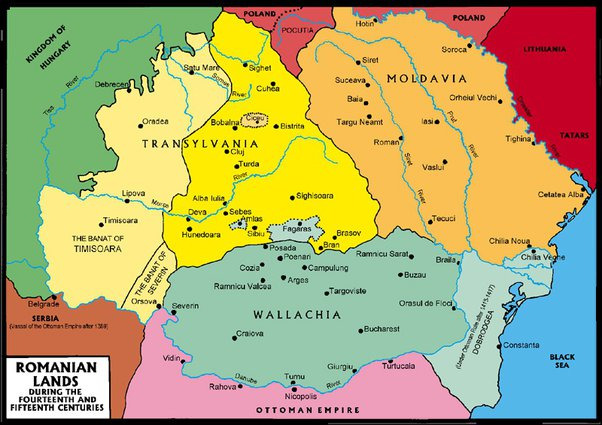
There were large bridges over rivers at: Severin, Giurgiu, Braila, Iasi, Tighina, Hotin, Deva, Alba Iulia. Satu Mare, West of Timisoara; West of Debrecen.
-
Bridges & Carpathian Passes:
-
Bridges, Carpathian Passes and Spawn Places:
1-) Blue → Hungary (Budapest)
3-) Green → Transylvania (Cluj)
5-) Teal → Serbia (Belgrade)
7-) Grey → Transylvania (Timisoara)
2-) Red → Bessarabia (Chisinau)
4-) Yellow → Wallachia (Bucharest)
6-) Pink → Moldova (Iasi)
![]() Orange → Wallachia (Craiova)
Orange → Wallachia (Craiova)
THE VLACH LAW:
You may have seen in this post https://forums.ageofempires.com/t/romania-wallachia-general-post/251886/4 videos talking about the Vlach law. And that the Vlach law was a constant cause of conflict between the Romanians and Hungarians in Transylvania.
But what is the Vlach Law? or "jus ####################
The essence of Vlach law is that:
- Peasants always had the right to travel and carry weapons, and always the right to hunt.
- There was no mandatory labour service towards the land owner, taxes were paid by livestock or in money.
- There was military service obligation towards the country (forms depending on the country).
- The Counts/Cnezi were a hereditary title but the Dukes/Voievods were elected by the Romanians. (only Romanians; as in Romanians in Hungary only didn’t give the Hungarians a vote; this was before the Union of the Three nation when the Romanian nobiltiy in Transylvania still existed)
- Vlachs law required that no foreign knez and voivode would rule over them.
- For all these privileges, they where required to participate in battle or pay a fine.
Eventually, the meaning of Voievods changed from Duke to King as the term Boyar was introduced at the end of the 1300s. This is why in Vlad Dracula’s campaign the noblemen being called “Voievods” is incorrect. Only Vlad was Voievod at that point. The noblemen were boyars.
But this is the early history of the Vlachs, so Voievod still meant Duke.
Although it says “Vlach”, it’s only a Romanian law (north of the danube) not Aromanian law (south of the danube). The Vlach law had roots in the Romano-Byzantine legal tradition.
The customary law comes from the Roman habit of land distribution were “sortes” (Romanian: sorți ) were drawn, the land was divided in falces (Romanian: fălci ), the neighbouring falces owner was a vicinus (Romanian: vecin). The uphold of the law was overseen by judes (Romanian juzi ) a title that was replaced by the Slavic word knez . The structure of early feudal Romanian society had a jude and a ducă , two titles later renamed under Slavic influence as cneaz and voievod.
The term “Vlach” became synonymous in some contexts with “shepherds”, but even in these cases an ethnical aspect was implicit. The establishment around the ethnically Vlachs of of a large number of slavs starting from the 6th century led to the linguistic Slavization of a significant number of these communities, so that in the 8th century, the word “Vlach” came, in Slavic languages, to designate any Orthodox shepherd, whether he remained Romanophone (as in the Kingdom of Eastern Hungary and the Principality of Transylvania) or became Slavophone (as in a large part of the Balkan Peninsula).
The Vlach law largely dissapeared in Transylvania after the establishment of the Union of the Three Nations and the suppression of the Bobâlna rebellion in 1438, while the Romanian nobility (Universitas Valachorum) had to choose between three solutions: the loss of all rights and falling into serfdom, moving beyond the Carpathians towards Moldova or Wallachia or merging into the Hungarian nobility by converting to Catholicism and the Hungarian language (the case of John Hunyadi, for example). While in Wallachia and Moldavia it eventually became written law.
This is why in Vlad the Impaler’s Wallachia and Stephen the Great’s Moldova peasants were required by law to always carry a weapon and had to train else they would be put to death (Romania was Medieval USA ![]() ).
).
So, in short:
- Always had the right to travel
- Always had the right to carry weapons
- Always the right to hunt.
- No mandatory labour service
- Taxes were paid by livestock or in money.
- The Counts/Cnezi were a hereditary title but the Dukes/Voievods were elected by the Romanians.
- Non-Romanians had no vote in picking the Dukes/Voievods .
- No foreign knez and voivode would rule over them.
- For all these privileges, they where required to participate in battle or pay a fine.
Essentially “do what they will, rule themselves as long as they paid taxes in time and fight for us”.
I can imagine a lot of UT made out of these.
I’ve thought for a while that the only thing missing from AoEII is Wallachians, Moldovans, and renaming the Italians the Lombards.
Wallachians and Moldovans separate as the former could be a good chaos civ as per Huns, Mongols, Goths, Cumans and Tartars with a unique steppe lancer type unique unit - and the latter whilst speaking the same language has a lot of cultural and political nuances that were/are evident both back in the Middle Ages and nowadays, they would be more in line with a more conventional European army.
Italians to Lombards just because it’s a pet peeve of mine.
- Second post newbie opinion jumping on a bandwagon
Came up with an extra idea for this. What if they get stronger cavalry/infantry, but as a debuff: cavalry units/infantry units are 5% more expensive something like that. Essentially going quality for quantity. Keeping the Romanian theme of being outnumbered in most of their battles.
I’m glad I’m not the only one who thought that a Romanian/Vlach civ could have the Fortified Church. I already decided to give them the Mule Cart as a nod to the Romani. The only issue with the Fortified Church is that its appearance doesn’t match the architecture we’d give the civ.
What’s with the clown face? Nothing I said is particularly odd.
There Is not need of send that emoji dude. Keep the discussion plis
There’s no confusion. None at all. The Romani are not Romanians, but have lived in Romania for hundreds of years, so there is a strong association between the two.
Unique unit: Vampire
Melee unit with a lifesteal attack and bonus damage vs villagers.
Personally I don’t want any more European civs, except for Romanians. They have a campaign already anyway (and it would be justification to give full campaigns to Slavs, Magyars and Turks if we assume the reason they don’t have any is they have Dracula).
The only other addition of European civs I’d be fine with is Gauls, if it meant Celts would lose the Woad Raider and get a unit that actually fits the middle ages.
